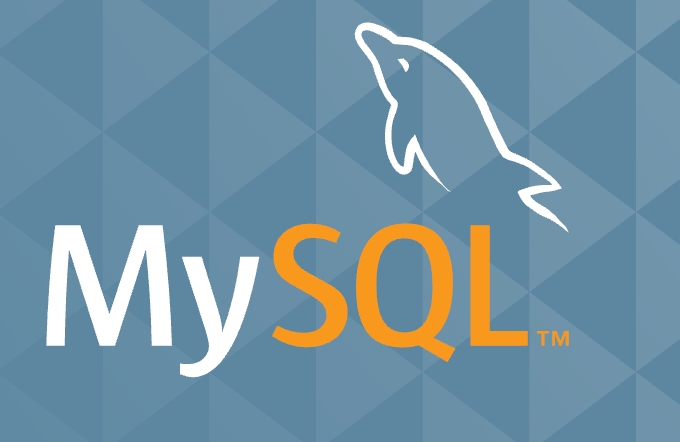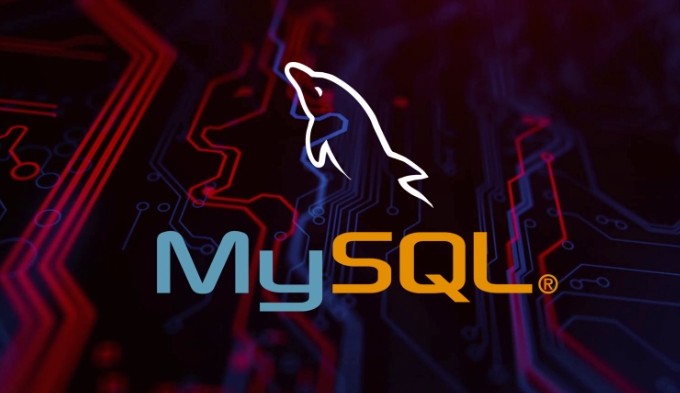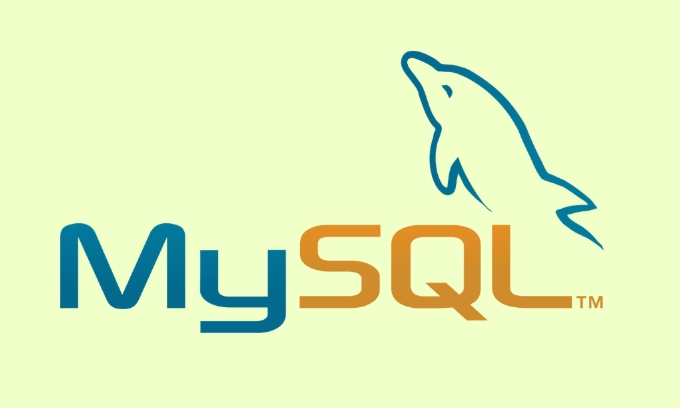Running MySQL with Docker simplifies environment configuration and enables rapid deployment and scaling. 1. Quickly start a standardized MySQL environment through mirroring, supporting version control; 2. Use docker-compose to build multi-service applications, suitable for microservice architecture; 3. Set root password, port mapping and data mount when starting containers; 4. Recommended mount local directories or use named volumes for data persistence; 5. Back up data regularly and avoid multiple containers sharing the same data directory; 6. You can connect to the database through client tools or container commands, pay attention to firewall and remote access rights configuration.

Using Docker to run MySQL is now a standard operation for many developers and operation and maintenance personnel. Containerized deployment not only simplifies environment configuration, but also enables rapid migration and scaling. If you are still manually installing the database and setting up the environment, you should try using Docker to manage your MySQL instance.

Why choose to run MySQL with Docker?
MySQL itself is a mature database system, but every time it installs, configures user permissions, data directories, persistent storage, etc. is quite troublesome. The advantage of Docker is that it is "packaged at once, run everywhere", and you can quickly start a standardized MySQL environment through mirroring.
Common benefits include:

- Quickly build a test or development environment
- Isolate database configurations for different projects
- Easy to do version control (such as specifying MySQL 5.7 or 8.0)
- With docker-compose, you can easily build multi-service applications
Especially for microservice architecture, each service has an isolated database instance, which is easy to implement with Docker.
How to run a MySQL container correctly?
It is the easiest to run docker run directly, but you have to pay attention to a few key points to actually use it. Here is a common startup command example:

docker run --name mysql-container -e MYSQL_ROOT_PASSWORD=my-secret-pw -d -p 3306:3306 -v /my/local/data:/var/lib/mysql mysql:latest
Explain a few key parameters:
-
--name: Give the container a name for easier subsequent management -
-e MYSQL_ROOT_PASSWORD: Set the root user password, which is required, otherwise the container will not be able to enter after starting -
-d: backend running -
-p 3306:3306: Map the host's 3306 into the container so that external access can be accessed -
-v: Mount the local directory to persist the data, otherwise the container will delete the data and disappear -
mysql:latest: The mirror tag used can also be changed to the specific version number
It is recommended not to add the -d parameter when running for the first time to see if the log output is normal, and then put it in the background to run.
How to make data persistent reliable?
Many people did not add the -v parameter at the beginning, but as soon as the container data was deleted, they disappeared. The data of MySQL containers exists within the container by default, and the life cycle is bound to the container. Therefore, to do persistence, the key is to mount /var/lib/mysql to a directory on the host.
In addition to this basic approach, you can also consider:
Use named volumes to manage data, such as:
docker volume create mysql_data docker run -v mysql_data:/var/lib/mysql...
Regularly backup data in the mount directory, or write scripts to automatically export SQL files
Do not hang multiple MySQL containers on the same data directory, as they are prone to conflicts
If you want to change the machine to migrate data, just copy the mount directory and then hang it in on the new machine, which is very convenient.
How to connect MySQL in container?
After running, you can connect to the database in a regular way, such as:
Locally use Navicat, DBeaver, and MySQL Workbench to connect to the host IP 3306 port
You can also execute
mysqlcommands inside the container to enter the interactive interface:docker exec -it mysql-container mysql -u root -p
A few points to note:
- If you are running Docker on a remote server, remember to open port 3306 on the firewall
- By default, MySQL only allows local root login. If you need to log in remotely, you must create additional users and authorize them.
- The IP address may change after the container is restarted, but the port mapping remains unchanged, so it is recommended to use the host IP port to connect.
Basically that's it. Using Docker to manage MySQL is not complicated, but some details are easy to ignore, especially data persistence and permission configuration. Once you are familiar with the process, you can easily deploy independent database instances for different projects without interfering with each other.
The above is the detailed content of MySQL and Docker: Containerizing Your Database Deployments. For more information, please follow other related articles on the PHP Chinese website!

Hot AI Tools

Undress AI Tool
Undress images for free

Undresser.AI Undress
AI-powered app for creating realistic nude photos

AI Clothes Remover
Online AI tool for removing clothes from photos.

Clothoff.io
AI clothes remover

Video Face Swap
Swap faces in any video effortlessly with our completely free AI face swap tool!

Hot Article

Hot Tools

Notepad++7.3.1
Easy-to-use and free code editor

SublimeText3 Chinese version
Chinese version, very easy to use

Zend Studio 13.0.1
Powerful PHP integrated development environment

Dreamweaver CS6
Visual web development tools

SublimeText3 Mac version
God-level code editing software (SublimeText3)
 Handling NULL Values in MySQL Columns and Queries
Jul 05, 2025 am 02:46 AM
Handling NULL Values in MySQL Columns and Queries
Jul 05, 2025 am 02:46 AM
When handling NULL values ??in MySQL, please note: 1. When designing the table, the key fields are set to NOTNULL, and optional fields are allowed NULL; 2. ISNULL or ISNOTNULL must be used with = or !=; 3. IFNULL or COALESCE functions can be used to replace the display default values; 4. Be cautious when using NULL values ??directly when inserting or updating, and pay attention to the data source and ORM framework processing methods. NULL represents an unknown value and does not equal any value, including itself. Therefore, be careful when querying, counting, and connecting tables to avoid missing data or logical errors. Rational use of functions and constraints can effectively reduce interference caused by NULL.
 Performing logical backups using mysqldump in MySQL
Jul 06, 2025 am 02:55 AM
Performing logical backups using mysqldump in MySQL
Jul 06, 2025 am 02:55 AM
mysqldump is a common tool for performing logical backups of MySQL databases. It generates SQL files containing CREATE and INSERT statements to rebuild the database. 1. It does not back up the original file, but converts the database structure and content into portable SQL commands; 2. It is suitable for small databases or selective recovery, and is not suitable for fast recovery of TB-level data; 3. Common options include --single-transaction, --databases, --all-databases, --routines, etc.; 4. Use mysql command to import during recovery, and can turn off foreign key checks to improve speed; 5. It is recommended to test backup regularly, use compression, and automatic adjustment.
 Calculating Database and Table Sizes in MySQL
Jul 06, 2025 am 02:41 AM
Calculating Database and Table Sizes in MySQL
Jul 06, 2025 am 02:41 AM
To view the size of the MySQL database and table, you can query the information_schema directly or use the command line tool. 1. Check the entire database size: Execute the SQL statement SELECTtable_schemaAS'Database',SUM(data_length index_length)/1024/1024AS'Size(MB)'FROMinformation_schema.tablesGROUPBYtable_schema; you can get the total size of all databases, or add WHERE conditions to limit the specific database; 2. Check the single table size: use SELECTta
 Handling character sets and collations issues in MySQL
Jul 08, 2025 am 02:51 AM
Handling character sets and collations issues in MySQL
Jul 08, 2025 am 02:51 AM
Character set and sorting rules issues are common when cross-platform migration or multi-person development, resulting in garbled code or inconsistent query. There are three core solutions: First, check and unify the character set of database, table, and fields to utf8mb4, view through SHOWCREATEDATABASE/TABLE, and modify it with ALTER statement; second, specify the utf8mb4 character set when the client connects, and set it in connection parameters or execute SETNAMES; third, select the sorting rules reasonably, and recommend using utf8mb4_unicode_ci to ensure the accuracy of comparison and sorting, and specify or modify it through ALTER when building the library and table.
 Aggregating data with GROUP BY and HAVING clauses in MySQL
Jul 05, 2025 am 02:42 AM
Aggregating data with GROUP BY and HAVING clauses in MySQL
Jul 05, 2025 am 02:42 AM
GROUPBY is used to group data by field and perform aggregation operations, and HAVING is used to filter the results after grouping. For example, using GROUPBYcustomer_id can calculate the total consumption amount of each customer; using HAVING can filter out customers with a total consumption of more than 1,000. The non-aggregated fields after SELECT must appear in GROUPBY, and HAVING can be conditionally filtered using an alias or original expressions. Common techniques include counting the number of each group, grouping multiple fields, and filtering with multiple conditions.
 Implementing Transactions and Understanding ACID Properties in MySQL
Jul 08, 2025 am 02:50 AM
Implementing Transactions and Understanding ACID Properties in MySQL
Jul 08, 2025 am 02:50 AM
MySQL supports transaction processing, and uses the InnoDB storage engine to ensure data consistency and integrity. 1. Transactions are a set of SQL operations, either all succeed or all fail to roll back; 2. ACID attributes include atomicity, consistency, isolation and persistence; 3. The statements that manually control transactions are STARTTRANSACTION, COMMIT and ROLLBACK; 4. The four isolation levels include read not committed, read submitted, repeatable read and serialization; 5. Use transactions correctly to avoid long-term operation, turn off automatic commits, and reasonably handle locks and exceptions. Through these mechanisms, MySQL can achieve high reliability and concurrent control.
 Connecting to MySQL Database Using the Command Line Client
Jul 07, 2025 am 01:50 AM
Connecting to MySQL Database Using the Command Line Client
Jul 07, 2025 am 01:50 AM
The most direct way to connect to MySQL database is to use the command line client. First enter the mysql-u username -p and enter the password correctly to enter the interactive interface; if you connect to the remote database, you need to add the -h parameter to specify the host address. Secondly, you can directly switch to a specific database or execute SQL files when logging in, such as mysql-u username-p database name or mysql-u username-p database name
 Managing Character Sets and Collations in MySQL
Jul 07, 2025 am 01:41 AM
Managing Character Sets and Collations in MySQL
Jul 07, 2025 am 01:41 AM
The setting of character sets and collation rules in MySQL is crucial, affecting data storage, query efficiency and consistency. First, the character set determines the storable character range, such as utf8mb4 supports Chinese and emojis; the sorting rules control the character comparison method, such as utf8mb4_unicode_ci is case-sensitive, and utf8mb4_bin is binary comparison. Secondly, the character set can be set at multiple levels of server, database, table, and column. It is recommended to use utf8mb4 and utf8mb4_unicode_ci in a unified manner to avoid conflicts. Furthermore, the garbled code problem is often caused by inconsistent character sets of connections, storage or program terminals, and needs to be checked layer by layer and set uniformly. In addition, character sets should be specified when exporting and importing to prevent conversion errors






